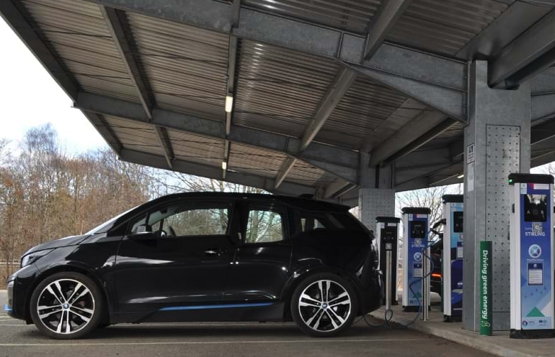The Scottish government has set out plans to integrate its ChargePlace Scotland network more closely with private charging networks to reach 6,000 points by 2026.
ChargePlace is owned and has been developed by the Scottish government, but it said its plans for public charging network expansion will require “significant levels of private investment” to grow at the scale and pace required.
Scotland’s plans have been given further detail with the ‘A network fit for the future: Vision for Scotland’s public electric vehicle charging network’ report, which says charging needs to be as convenient and reliable as possible to meet the demands of communities, businesses and visitors.
Scotland has already reached 4,000 points across the country (2,518 of which are part of ChargePlace Scotland), which provides the greatest coverage per head of population in the UK outside of London.
The Scottish government’s Electric Vehicle Infrastructure Fund was launched last year to leverage £60 million of public and private investment to focus on areas of the public charging market where private investment on its own is not feasible, “so that no part of Scotland is left behind”.
The report said a one-size-fits-all approach to integrating the public charging network into the wider sustainable transport system will not be feasible across Scotland; as there will be a higher dependency on car use in some areas, particularly in rural settings.
Reducing dependency on cars is also a key element of Scotland’s strategy, as reflected in its route map to achieve a 20% reduction in car kilometres by 2030.
Fiona Hyslop, Minister for Transport, said: “It’s not only the Electric Vehicle Infrastructure Fund that will help increase charging opportunities for people across Scotland.
“New legislation introduced by the Scottish Government will see requirements for charge points to be installed in car parks of new buildings as well as those undergoing major renovation.
“Furthermore, recent changes to Permitted Development Rights will further simplify the process of installing electric vehicle charge points, and combining these with renewable energy technologies.”
Hyslop said ultimately, Scotland needs to move away from its reliance on cars for everyday journeys, regardless of their mode of propulsion.
She added: “The location of charge points provides opportunities to influence behaviour and help people to make more sustainable transport choices, whether that’s onward journeys by public or shared transport, by a car club vehicle or by cycling, wheeling or walking.
“It is my intention that we will publish an implementation plan in the coming year setting out the key actions and priorities to take the Vision forward, consulting along the way. In doing so, together we can deliver a truly world-leading, clean, green public charging network. A network that is fit for the future and a vital part of Scotland’s transport and energy infrastructure; supporting economic growth and a just transition towards net zero.”









